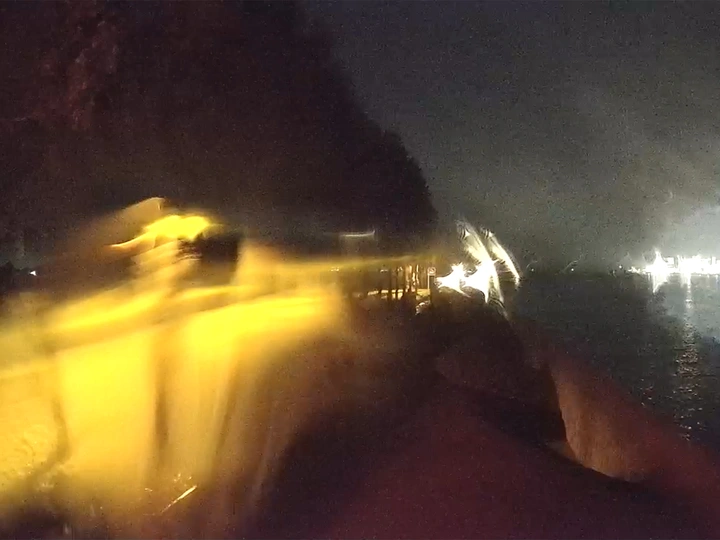Direct Transmission: Automated Spatial Governance

Leidy Karina Gómez Montoya
We are Leidy Karina Gómez Montoya and Tonda Budszus, designers and filmmakers based in Rotterdam. We graduated from the GEO—Design Master’s at Design Academy Eindhoven in 2024, where we began shaping our collaborative practice as Scinema. The “S” stands for Scientific, Spatial, and Soft—but also introduces a glitch in what is considered cinema, both as a medium, and as a spatial experience.
Our combined backgrounds in Architecture, Visual Communication, Product Design, and Design Research inform our interdisciplinary approach. Having worked professionally in these fields, we wanted to move beyond industry-standard methods, which led us to explore spatial research through experimental filmmaking.
In our practice, we investigate how contemporary imaging practices constitute space; distribute land, manifest dominant narratives, and reinforce power structures. This involves analysing images—cinematic, institutional, scientific, and algorithmic—and their underlying infrastructures through experimental mapping techniques, as well as developing custom optical and sonic recording devices, automated image-processing frameworks, and multimedia installations.
In parallel, we curate moving-image screenings that showcase diverse forms of filmmaking. During our studies we developed geo.frames, a format highlighting artists, designers, and researchers who use film to investigate topics such as geopolitical frictions, knowledge production, material flows, and infrastructural violence. Through interventions in projection formats, seating arrangements, and scenography, the viewing space becomes a site to explore how moving images can be contextualized and experienced.
Continuing to engage with alternative cinema formats, we co-curated the Melted Film Festival during Dutch Design Week 2024 and hosted a screening at Van Abbemuseum this year. Currently, we are artists-in-residence at V2_Lab for Unstable Media, a space supporting projects at the intersection of art and technology.
The experience of a space can unfold from the contemplation of an image—a spatial understanding that is both immediate and deferred. Architecture, as a discipline, has long relied on images to shape its discourse and the built environment. Plans and models precede construction. But images do more than depict: they idealise and obscure. Images not only represent space—they manufacture spatial realities.
Today, the power of images extends far beyond the scale of a building. Computational flood models redraw the edges of coastal regions. Remote sensing imagery reinforces geopolitical claims. Real-time machine vision reroutes supply chains. Machine-generated images feed AI systems that structure civic life and its underlying infrastructures.
However, while cognitive automation promises problem-solving at scale, its operations are governed by functionality and calculability. As Franco Berardi writes, programmes possess intelligence but not thought. Computation cannot engage with situated, embodied experiences. In the face of intersecting planetary crises, computational rationalism is not only insufficient—it perpetuates asymmetrical wealth, extractivism, and systemic instability.
Direct Transmission investigates machine vision infrastructures as a cinematic topology for spatial governance: lightweight buildings orbiting the Earth, street lights with 360° vision, deep sea tunnels guiding intercontinental data traffic, and high-rises sensing atmospheric flows. These architectures compose space through motion: panning, zooming, and tracking. But unlike traditional buildings, they are not built to be inhabited—they produce the built environment. And unlike cinema, the resulting images are not made to be watched—they are made to manage.
By moving beyond the functional logics of these systems, Direct Transmission seeks to speculate on forms of cognitive automation rooted in irrational, situated, and poetic moving images to explore alternative spatial imaginaries.